Santuario Chimyeongjasan (치명자산성지)
0m 4684 2024-04-07
Baramssoeneun-gil 89, Wansan-gu, Jeonju-si, Jeonbuk-do.
Se encuentra localizado en la cima del monte Seungamsan, que es el escenario de fondo del pabellón histórico Hanbyeokdang, ubicado en el área sudeste de la ciudad de Jeonju. Hacia el costado de una gran cruz de piedra, con aproximadamente 4 metros de altura, se ha fundado una iglesia católica sobre una roca tallada. En este santuario descansan los restos de la pareja de Yu Jung-cheol (Juan) y Lee Sun-i (Rugalda), y el resto de los miembros familiares. Yu Hang-geom, el primer fiel católico de Corea, y padre de Yu Jung-cheol, nació en el pueblo Chonam, Iseo-myeon, de Wanju-gun. Después de sufrir opresiones y persecuciones por cuestiones religiosas, fueron decapitados en las afueras de Nammun. La pareja de Yu Jung-cheol y Lee Sun-i, luego de mantener la virginidad por sus ideales religiosos hasta después de 4 años de haberse casado, finalmente fueron condenados a muerte. La enorme cruz de piedra puede ser observada desde las distintas partes del área, y es famosa como lugar de peregrinación de los cristianos. Los túmulos de la pareja se encuentran enterrados en la parte más alta del santuario, y hacia un lado está presente la iglesia conmemorativa. Por encima de donde se encuentra la tumba de la pareja, se ve asomando la roca milagrosa (de Jesús y María), designado Patrimonio Natural por la excelencia de la escultura. Otra de las bellezas para apreciar es el camino que se presenta desde el comienzo hasta la cima de la montaña, que se asemeja a una alfombra de flores.
Sendero Baramssoeneun-gil (바람쐬는길)
549.9882202393197m 0 2024-04-06
Baramssoeneun-gil 21, Wansan-gu, Jeonju-si, Jeonbuk-do
Pabellón Hanbyeokdang (한벽당)
692.2113109234172m 3069 2024-04-07
Girin-daero 2, Wansan-gu, Jeonju-si, Jeonbuk-do.
Ubicado en la ciudad de Jeonju de la provincia de Jeollabuk-do, el pabellón Hanbyeokdang ha sido designado Propiedad Cultural Tangible Nº 15. En 1404, un funcionario civil de la dinastía Joseon fundó esta estructura para su quinta. Hanbyeokdang se estableció al pie del monte Seungamsan con hermosos paisajes del río Jeonjucheon. En el pasado, muchos escritores buscaban este lugar para inspirarse sobre sus obras. El pabellón es famoso por la belleza del paisaje de nieblas en las montañas, haciéndolo uno de los ocho paisajes más famosos de Jeonju.
Túnel Hanbyeok (한벽터널)
708.2679841558783m 0 2024-04-06
Gyo-dong San 7-3, Wansan-gu, Jeonju-si, Jeonbuk-do
Centro Cultural Hanbyuk de Jeonju (전주한벽문화관)
875.4182851810405m 3840 2023-04-06
Jeonjucheondong-ro 20, Wansan-gu, Jeonju-si, Jeonbuk-do.
El Centro Cultural Hanbyuk de Jeonju ofrece la oportunidad de conocer y experimentar las diferentes formas de cultura tradicional. Se puede disfrutar del pansori, minyo, danzas tradicionales y funciones durante todo el año. Además, podrá probar la comida representativa de Jeonju, el bibimbap (arroz con vegetales), y otros platos especiales en el pabellón de restaurantes tradicionales. También está provisto de una sala para ceremonias de bodas tradicionales.
Escuela Confuciana Jeonju Hyanggyo (전주향교)
988.9696403653386m 4530 2024-04-07
Hyanggyo-gil 139, Wansan-gu, Jeonju-si, Jeonbuk-do.
Es una escuela confuciana que fue fundada en la dinastía de Joseon (1392-1910) y fue designada como Tesoro Histórico Nº 379. Fue un establecimiento educativo del período de Joseon que estuvo originariamente ubicado en el sitio del santuario Gyeonggijeon, pero fue relocalizado en este lugar en 1603. Las tablillas mortuorias de 7 eruditos confucianos chinos y los 18 eruditos coreanos están conservadas en el edificio principal llamado Daeseongjeon.
Taejogwan of the Royal Room [Korea Quality] / 왕의지밀 태조관 [한국관광 품질인증/Korea Quality]
1.2 Km 0 2024-04-07
5218-26, Chunhyang-ro, Wansan-gu, Jeonju-si, Jeonbuk-do
+82-63-284-1004
Jeonju is the origin of the Joseon Dynasty and the exemplar of its culture, and this elegant hanok (traditional Korean house) hotel celebrates the beauty of the beloved city. As evident from its name, the hotel promises a comfortable stay in a hanok. The hotel complex stands on a plot of land spanning 19,840 m2, containing one modern-style building and 14 hanok buildings that retain the graceful curve of the tiled roof. The surrounding scenery is that of mountains and fields surrounding the complex.
Taejogwan is one of the 11 residential buildings that are all named after the kings of the Joseon Dynasty. There are four rooms in the building, furnished with beds. Grade 1 Gold and Silver Rooms are notable for their king-sized back and whirlpool bath for the guests’ comfort. Each room is designed around a seamless combination of the unique beauty of hanok and modern comfort. The view of the wooden exposed beams (Gold Room), paintings on the wall, and the view of nature beyond the window wall recreate the unique scenery of the hanok,
Another star of the hotel is a hanok café and the Convention Center, which houses convention halls, such as Daejanggeum Hall and Hunminjeongeum Hall, that offer spaces for events of all sizes. The two hanok restaurants on the premise, Samtaegeuk and Samjogo Restaurants, are designated as COVID-19 Safe Restaurants by the city of Jeonju. Gyeonggijeon Shrine housing the portrait of Yi Seong-gye, King Taejo of the Joseon Dynasty, can be reached by car in 6 min. Jeonju’s famous sights such as Jeonju Hanok Village can also be reached in a short time.
Taejonggwan of the Royal Room [Korea Quality] / 왕의지밀 태종관 [한국관광 품질인증/Korea Quality]
1.2 Km 0 2024-04-07
5218-24, Chunhyang-ro, Wansan-gu, Jeonju-si, Jeonbuk-do
+82-63-284-1004
The Royal Room is a hanok (traditional Korean house) hotel encapsulating Jeonju’s spirit as a city of tradition and art, and the exemplar of the state of Joseon. The hanok buildings are built next to one another on a plot spanning 19,840 m2 in Daeseong-dong, inspired by the unique elegance and understated extravagance of Joseon’s royal culture.
11 residential buildings are all named after the kings of the Joseon Dynasty. Taejonggwan is one of them, containing six rooms in total. Each room is a self-contained unit made up of bedrooms and restrooms, furnished with a combination of hanok’s unique charms and modern comfort. The view of the wooden exposed beams, paintings on the wall, and the view of nature beyond the window wall recreate the unique scenery of the hanok. All rooms are also equipped with modern comforts such as wireless Internet, TV, refrigerator, and air conditioning.
The hotel has about 150 parking spots, a hanok cafe, and theConvention Center with spaces designed for large meetings and events. Samtaegeuk and Samjogo Restaurants are designated as COVID-19 Safe Restaurants by the city of Jeonju. The hotel is located about 7 min by car to Jeonju Hanok Village, and is close to other famous sights such as Jeondong Catholic Cathedral, Gyeonggijeon Shrine, and Jeonjuhyanggyo Local Confucian School, which make ideal half-day trip destinations.
Sejonggwan of the Royal Room [Korea Quality] / 왕의지밀 세종관 [한국관광 품질인증/Korea Quality]
1.2 Km 7 2024-04-07
5218-22, Chunhyang-ro, Wansan-gu, Jeonju-si, Jeonbuk-do
+82-63-284-1004
This hanok (traditional Korean house) hotel is located near Jeonju Hanok Village. The hotel has enjoyed great popularity among the tourists visiting Jeonju since its opening in 2018, for its convenient location of only a 7-min drive away from Jeonju Hanok Village and its faithful recreation of hanok’s beauty with modern sensibilities. The hotel complex stands on a plot of land spanning 19,840 m2, containing 11 residential buildings and other facilities. As the name of the hotel indicates, each building in the hotel is named after the kings of the Joseon Dynasty.
Sejonggwan is named after King Sejong. Sejonggwan has eight rooms, divided between Gold and Silver Rooms. Each room is a self-contained unit made up of bedrooms and restrooms, furnished with a combination of hanok’s unique charms and modern comfort. The view of the wooden exposed beams (Gold Room), paintings on the wall, and the view of the nature beyond the window wall recreate the unique scenery of the hanok, while amenities such as TV, refrigerator, and air conditioning offer a comfortable stay.
Other facilities inside the hotel complex include the spacious parking lot, an elegant hanok cafe, and the Convention Center, housing family-size Daejanggeum Hall and Hunminjeongeum Hall, a large hall suited for seminars. It takes only 10 min by car to reach any tourist sites near Jeonju Hanok Village from the hotel.
Yedawon [Korea Quality] / 예다원 [한국관광 품질인증]
1.2 Km 184 2024-04-07
85-34, Hyanggyo-gil, Wansan-gu, Jeonju-si, Jeonbuk-do
+82-63-228-8218
Sitting at the foot of Omokdae, Yedawon is a classic Hanok opened in December 2013. It retains the unique beauty of Hanok, yet is equipped with neat and convenient facilities. The owner, who used to operate a traditional culture space for Hanok experience such as traditional tea and natural dying, newly built a Hanok for guests to be able to experience a cultural accommodation. Just one-minute away are Jeonjuhyangyo Confucian School and Jeonju Hanbyuk Culture Center, whereas the National Intangible Heritage Center is located over the Omokgyo Bridge outside the culture center. Gyenggijeon, Jeondong Catholic Cathedral, Omokgyo Bridge, and Nambu Market are all within walkable distance.
Yeodawon has six rooms named after flowers; ceilings with exposed rafters and crossbeams; walls with Hanji wallpapers; and decorations with black-and-white drawings and Korean calligraphy. In particular, Lotus Flower Room is furnished with a folding screen with a landscape painting on it, and a big black-and-white drawing.
Yeodawon is special in that guests can get first-hand experience of the traditional culture in different ways: traditional tea, traditional dying, Hanji, traditional dessert, traditional flower pancake, etc. The experience costs about 10,000 - 15,000 won per person, and available for four persons or more.
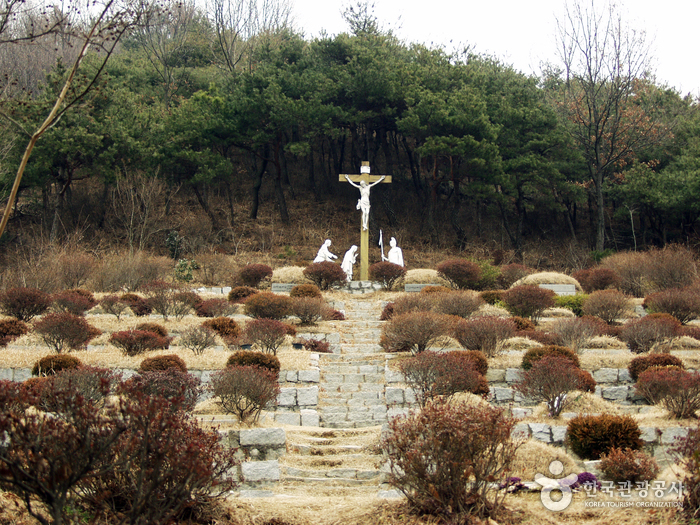
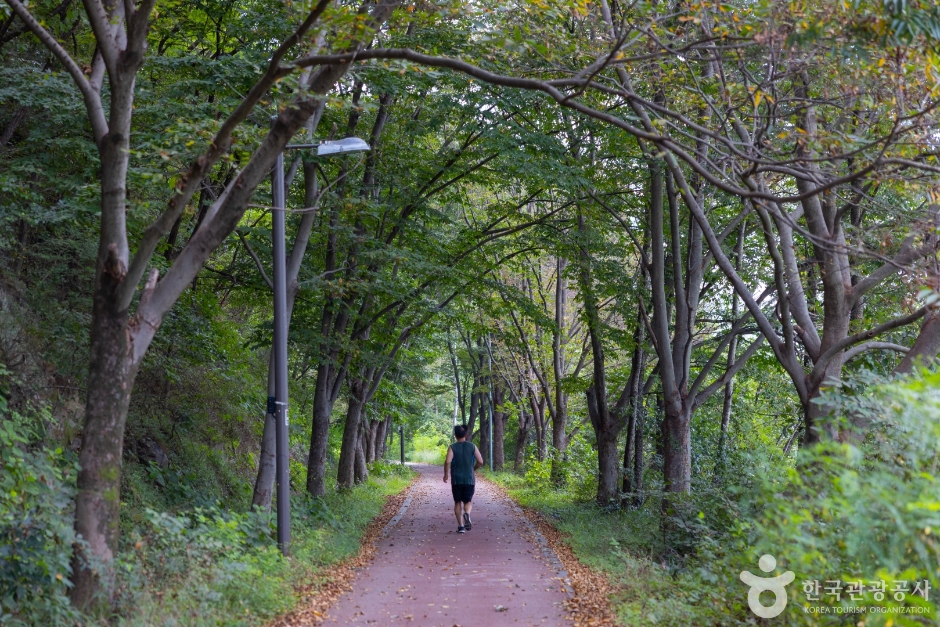
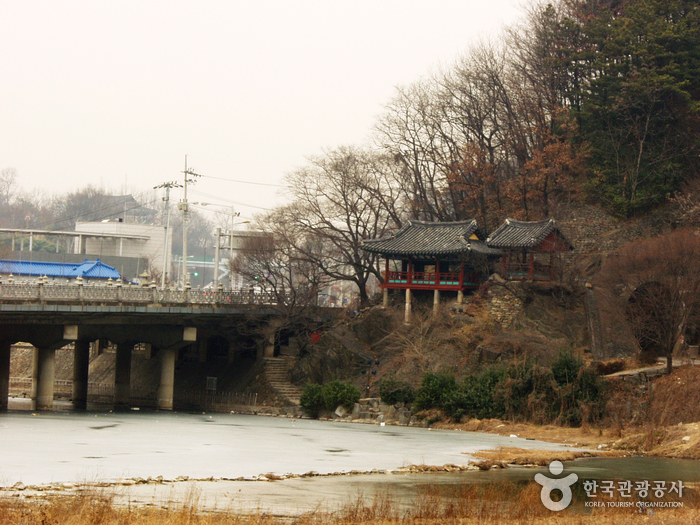

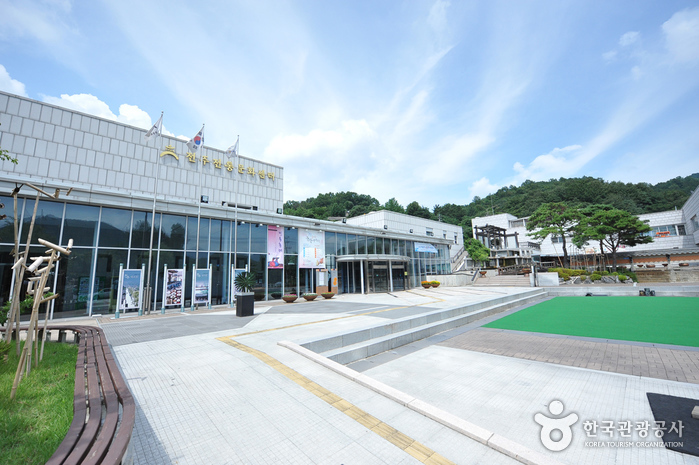
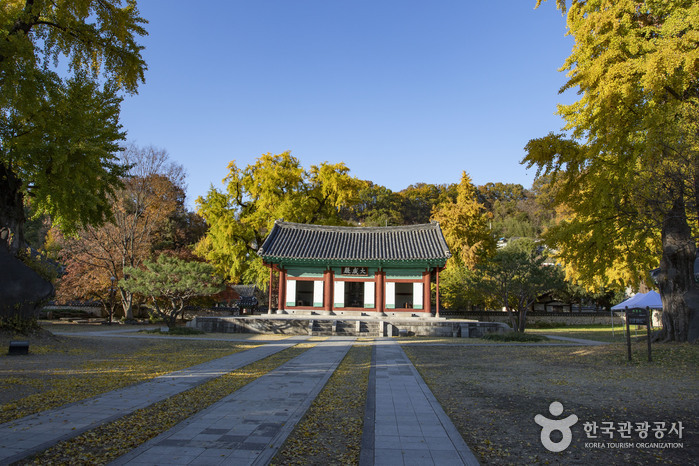
![Taejogwan of the Royal Room [Korea Quality] / 왕의지밀 태조관 [한국관광 품질인증/Korea Quality]](http://tong.visitkorea.or.kr/cms/resource/54/2705954_image2_1.jpg)
![Taejonggwan of the Royal Room [Korea Quality] / 왕의지밀 태종관 [한국관광 품질인증/Korea Quality]](http://tong.visitkorea.or.kr/cms/resource/30/2705930_image2_1.jpg)
![Sejonggwan of the Royal Room [Korea Quality] / 왕의지밀 세종관 [한국관광 품질인증/Korea Quality]](http://tong.visitkorea.or.kr/cms/resource/23/2705923_image2_1.jpg)
![Yedawon [Korea Quality] / 예다원 [한국관광 품질인증]](http://tong.visitkorea.or.kr/cms/resource/91/2594991_image2_1.jpg)
 Español
Español
 한국어
한국어 English
English 日本語
日本語 中文(简体)
中文(简体) Deutsch
Deutsch Français
Français Русский
Русский